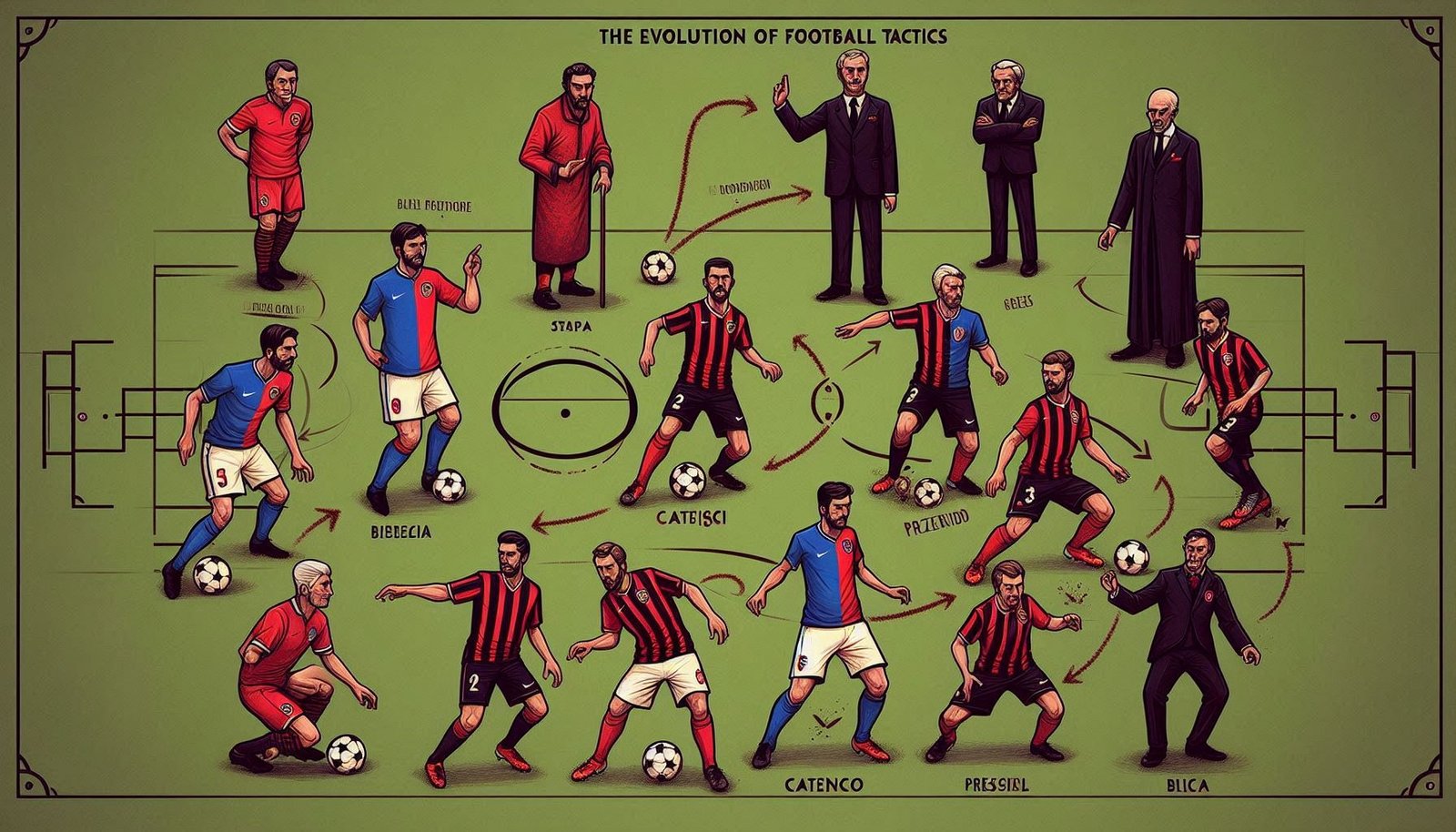The Evolution of Soccer Tactics has undergone a radical tactical transformation in recent years, with innovative formations and playing styles revolutionizing how the game is played at all levels. From Pep Guardiola’s position-less football to the resurgence of three-at-the-back systems, today’s tactical landscape barely resembles the sport from a decade ago.
In this comprehensive guide to modern soccer tactics, we analyze:
✔ The death of traditional 4-4-2 and rise of hybrid systems
✔ Positional play vs. transition football – which dominates?
✔ Data-driven tactical innovations changing coaching
✔ How specific formations exploit modern rules
✔ The next tactical revolution coming to the sport
Whether you’re a coach, analyst, or tactically-curious fan, this deep dive reveals how soccer’s chess match has evolved.
The Tactical Timeline: How Formations Have Changed
2000s: The 4-4-2 Era
-
Standard across Europe
-
Clear defensive/attacker roles
-
Examples: Man United treble team
2010s: Tiki-Taka Dominance
-
4-3-3 with false nine
-
Positional rotation
-
Guardiola’s Barcelona blueprint
2020s: Positional Fluidity
-
Hybrid 3-2-5 in possession
-
Defensive 4-4-2 out of possession
-
Examples: Arteta’s Arsenal, De Zerbi’s Brighton
Historical Analysis: The Coaches’ Voice
Breaking Down Today’s Dominant Formations
1. The 3-2-5 Build-Up System
-
Pioneers: Guardiola, Arteta
-
How It Works:
-
3 CBs + 2 pivots in buildup
-
5 attackers in final third
-
Fullbacks become midfielders
-
2. The 4-2-3-1 Pressing Machine
-
Modern Variant: Klopp’s gegenpress
-
Key Features:
-
Compact vertical blocks
-
Counter-pressing triggers
-
Fullback overloads
-
3. The 3-4-3 Transition Monster
-
Best Example: Conte’s systems
-
Why Effective:
-
Numbers in defense
-
Quick counters
-
Wingback freedom
-
For weekly tactical analysis, visit SoccerNewsZ.com
Positional Play vs. Transition Football
| Aspect | Positional Play | Transition Football |
|---|---|---|
| Philosophy | Control | Chaos |
| Tempo | Slow buildup | Direct counters |
| Key Coach | Guardiola | Klopp |
| Formation | 3-2-5 | 4-3-3 |
| PPDA* | 8-12 | 4-7 |
*Passes per defensive action
2024 Trend: Hybrid systems blending both styles
Data’s Tactical Impact
5 Analytics-Driven Innovations
-
Goalkeeper Passing Maps
-
Ederson/Alisson changing build-up
-
-
Halfspace Dominance
-
Why wingers now cut inside
-
-
Pressing Triggers
-
Forcing errors on weak-foot passes
-
-
Set Piece xG Models
-
Brentford’s 20% goal share
-
-
Fatigue Monitoring
-
When to press vs. sit back
-
Data Source: StatsBomb Research
How Rule Changes Shaped Tactics
1. Offside Rule Tweaks
-
More aggressive defensive lines
2. Substitution Increases
-
High-press sustainability
3. VAR Interventions
-
Less shirt-pulling in boxes
4. Concussion Subs
-
Tactical fouling adjustments
Youth Development Tactical Shifts
-
Positional Versatility > Specialization
-
Small-Sided Games emphasizing decision-making
-
Biomechanical Analysis preventing injuries
-
Cognitive Training for spatial awareness
The Next Tactical Revolution
1. Positionless Football
-
Total fluidity like basketball
2. AI-Assisted Real-Time Adjustments
-
Coaches getting live data feeds
3. Dynamic Formations
-
Shifting shapes per possession
4. Specialist Set Piece Teams
-
Dedicated dead-ball units
Coaching’s New Toolkit
| Technology | Tactical Impact |
|---|---|
| PlayerCam | Tracking movements |
| VR Training | Scenario repetition |
| Wearables | Fatigue management |
| Tablets | Instant feedback |
Fan Engagement With Tactics
-
Amazon Prime’s Tactical Cam
-
FIFA Game Influence on understanding
-
Twitter Thread Analysts like @CoachesRoom
“Today’s fans understand inverted fullbacks better than 1990s coaches did” – Arsène Wenger
Final Verdict: Soccer’s Tactical Future
The Evolution of Soccer Tactics, The game is accelerating toward complete positional fluidity, where formations become meaningless descriptors rather than rigid structures. Within five years, we may see the first fully AI-coached teams making real-time adjustments no human could process.
What tactical trend fascinates you most? Debate in the comments! ⚽




No comment